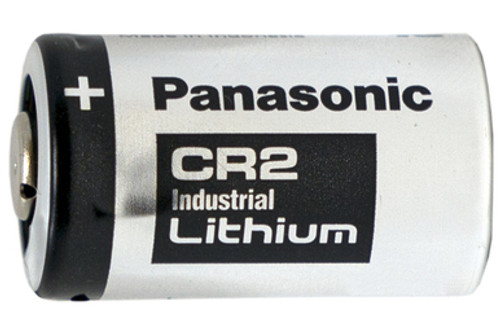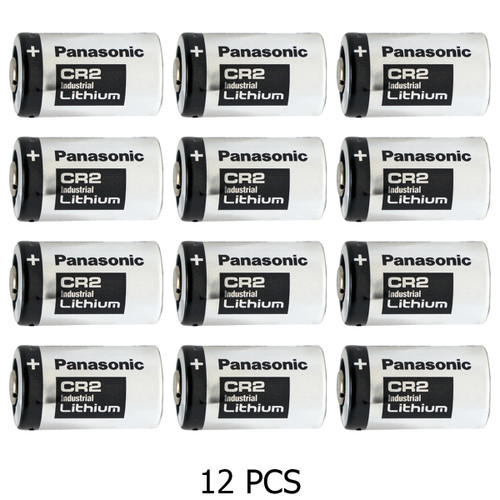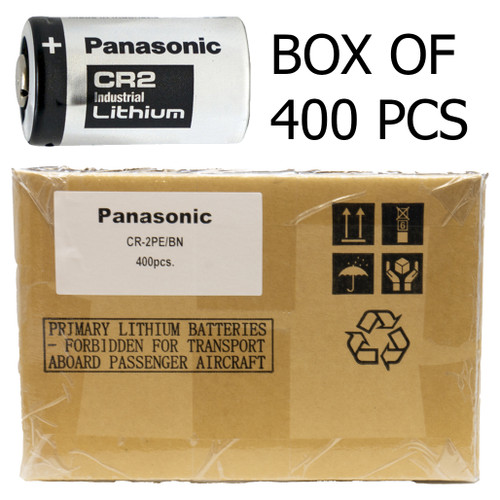Flashlight Batteries
-

-

Power Portable
3.6 Volt NiCd Battery Stick (1800 mAh) for Flashlights (Streamlight Stinger HP, XT, PolyStinger)
$21.99As low as: -

Power Portable
3.6 Volt NiMH Battery Stick (3000 mAh) for Flashlights (Streamlight, Stinger HP, XT & PolyStinger)
$24.99As low as: -

-

Power Portable
6 Volt NiCd Battery (2600 mAh) for Streamlight (SL20, SL20S, SL20X) & Maglite Flashlights
$31.69As low as: -

Power Portable
6 Volt NiMH Battery Stick (3000 mAh) for Super Stinger & Ultra Stinger Flashlights
$33.69As low as: -

Panasonic
16-Pack CR2 Panasonic Industrial 3 Volt Lithium Batteries
Was: $45.99Now: $34.99As low as: -

-

Power Portable
6 Volt NiMH Battery (3500 mAh) for Streamlight (SL20, SL20S, SL20X) & Maglite Flashlights
As low as: -

-

Panasonic
100-Pack CR2 Panasonic Industrial 3 Volt Lithium Batteries
Was: $239.99Now: $209.99As low as: -

-

FLASHLIGHT BATTERIES
Comprehensive Guide to Flashlight Batteries: Choosing the Best Power Source for Emergency Situations
Flashlights are essential tools for emergencies, outdoor adventures, or even everyday use. However, the efficiency of your flashlight largely depends on the quality of the batteries powering it. Reliable and long-lasting batteries ensure your flashlight is always ready to perform when you need it most.
Why Flashlight Batteries Matter in Emergency Situations
In emergencies, whether it's a power outage, natural disaster, or nighttime car trouble, a functioning flashlight can be a lifesaver. However, even the best flashlight is useless without dependable batteries. Investing in high-quality batteries ensures that your flashlight performs reliably when seconds count. Long-lasting and efficient batteries not only save you the hassle of frequent replacements but also reduce the risk of being left in the dark during critical moments.
CR2 Panasonic Industrial 3-Volt Lithium Battery
Key Features of CR2 Lithium Batteries
The CR2 Panasonic Industrial 3-Volt Lithium Battery is a highly regarded option for powering flashlights, especially compact and high-performance models. Lithium batteries are renowned for their superior energy density, long shelf life, and outstanding performance in extreme temperatures, making them ideal for various applications.
Energy Density: Lithium batteries provide more power in a smaller size compared to traditional alkaline batteries. This makes them perfect for compact flashlights where space is at a premium.
Temperature Resistance: Unlike other battery types that may falter in extreme cold or heat, lithium batteries maintain their performance across a wide temperature range. This feature is particularly beneficial for outdoor enthusiasts or those living in regions with harsh climates.
Extended Shelf Life: With a shelf life of up to 10 years, CR2 batteries ensure your flashlight is always ready when needed, even if it's been stored for long periods.
Applications of CR2 Batteries
These batteries are commonly used in tactical flashlights, headlamps, and other high-performance lighting devices. Their reliability makes them a favorite among professionals, such as first responders and outdoor adventurers, who demand consistent performance.
Rechargeable Options: NiCd and NiMH Battery Sticks
Advantages of Rechargeable Batteries
Rechargeable batteries like NiCd (Nickel Cadmium) and NiMH (Nickel Metal Hydride) are popular for their reusability and cost-effectiveness. While they require an initial investment in a charger, the ability to recharge these batteries multiple times makes them an economical and eco-friendly choice.
NiCd Batteries:
Known for their ability to withstand high discharge rates, NiCd batteries are well-suited for high-drain devices like flashlights.
While their capacity is generally lower than NiMH batteries, they excel in durability and can endure frequent charging cycles.
They are less prone to self-discharge, ensuring they retain their charge for extended periods when not in use.
NiMH Batteries:
With a higher capacity than NiCd batteries, NiMH batteries provide longer runtimes between charges, making them ideal for prolonged flashlight use.
They are also more environmentally friendly, as they do not contain toxic cadmium, which is a significant concern with NiCd batteries.
However, NiMH batteries may have a higher self-discharge rate, meaning they lose charge more quickly when not in use.
Environmental Impact
Switching to rechargeable batteries significantly reduces the waste generated by disposable batteries. For eco-conscious consumers, NiMH batteries, in particular, offer an excellent balance of performance and sustainability.
6-Volt NiCd and NiMH Batteries: Powering High-Capacity Flashlights
Some flashlights, such as the Streamlight SL20, SL20S, SL20X, and Maglite models, require specialized battery packs for optimal performance. For these devices, 6-Volt NiCd and NiMH batteries are the standard choices.
Features of 6-Volt Batteries
NiCd 6-Volt Battery:
Capacity: 2600 mAh
Offers reliable performance and is ideal for applications requiring consistent power output.
Its ability to handle high discharge rates makes it a dependable choice for heavy-duty flashlights.
NiMH 6-Volt Battery:
Capacities vary, with options such as 3000 mAh and 3500 mAh.
Higher capacity translates to longer runtime, making these batteries a better choice for extended use.
They provide a greener alternative to NiCd batteries, aligning with modern environmental standards.
Choosing Between NiCd and NiMH
The choice between NiCd and NiMH batteries depends on your specific needs:
For rugged, high-drain applications or frequent use, NiCd batteries are a durable option.
For longer runtimes and eco-friendliness, NiMH batteries are the better choice.
Compatibility and Recommendations
Importance of Compatibility
When selecting batteries for your flashlight, ensuring compatibility with your device is critical. Flashlights vary in their power requirements, and using the wrong type of battery can lead to:
Suboptimal Performance: An incompatible battery may fail to provide sufficient power, leading to dim light or reduced runtime.
Potential Damage: Using the wrong battery type can damage the flashlight's internal components or pose a safety hazard.
Tips for Choosing the Right Battery
Check Manufacturer Recommendations: Always refer to your flashlight's user manual or manufacturer specifications for guidance on compatible batteries.
Consider Your Usage Needs:
If you need a flashlight for occasional use, disposable lithium batteries like the CR2 may suffice.
For frequent use, investing in rechargeable NiCd or NiMH batteries is more economical and sustainable.
Evaluate Runtime Requirements:
For extended use, prioritize high-capacity batteries such as NiMH with 3000 mAh or higher.
For shorter durations, standard capacity batteries may be sufficient.
Stock Up on Spares:
Keep extra batteries on hand, especially for emergencies. For flashlights using rare or specialized batteries, this is particularly important.
Maintenance and Storage Tips for Flashlight Batteries
To ensure your flashlight batteries perform at their best and last as long as possible, follow these maintenance tips:
Store Batteries Properly: Keep batteries in a cool, dry place away from direct sunlight or extreme temperatures.
Avoid Overcharging: For rechargeable batteries, use a charger with an automatic shut-off feature to prevent overcharging, which can reduce battery lifespan.
Inspect for Damage: Periodically check your batteries for signs of corrosion, leakage, or physical damage. Replace any compromised batteries immediately to avoid damaging your flashlight.
Use Fresh Batteries: Batteries lose their capacity over time, even when unused. Rotate your stock and use the oldest batteries first to avoid waste.
Choosing the right batteries for your flashlight is essential to ensure consistent performance, especially in emergencies. Whether you opt for the long-lasting power of CR2 lithium batteries, the reusability of NiCd and NiMH rechargeable batteries, or specialized 6-Volt packs for high-capacity flashlights, understanding your needs and your flashlight's requirements is key.
By investing in quality batteries and maintaining them properly, you can ensure your flashlight is always ready to light the way when you need it most.

